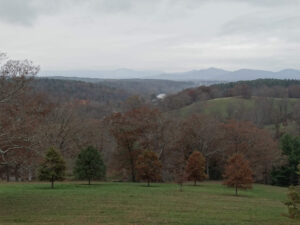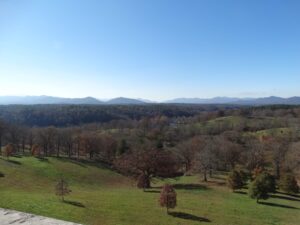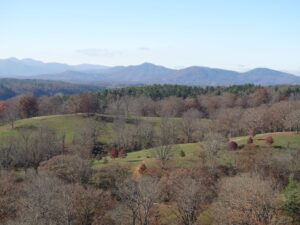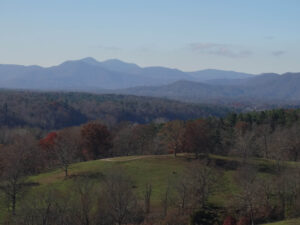Several years ago, a couple of friends and I visited the Biltmore Mansion in Ashville, N.C. It was mid-November, and we’d gone specifically to see Biltmore decorated for Christmas. (If you haven’t done that, I highly recommend it.)
We toured the main house twice, first at night to experience a candlelit Christmas evening, then again the next day to hear the audio-guided tour presentation. We also took every other tour offered—the backstairs, the roof, behind-the-scenes winery and tasting, and the land tour. While all the tours were well worth the money, the tour we liked best was, surprisingly, the land tour.
The Land
Today, it’s hard to look at Biltmore’s lush grounds and surrounding forest and imagine the land as it was when George Vanderbilt first saw it in 1888. Years of cutting down the best trees, numerous wildfires, overgrazing, and constant farming had taken a toll on the land. But the invigorating air, pleasant climate, and beauty of the distant mountains inspired him, and the idea for a country estate—which he eventually named Biltmore—was born.
To turn his dream into a reality, Vanderbilt hired landscape architect, Frederick Olmsted, the man responsible for landscape designs that included New York City’s Central and Prospect Parks, Niagara Falls and Buffalo Parks, and redesign of the Capitol grounds, to name just a few. (Renowned architect Richard Hunt designed the house.)
Unfortunately, the woodlands Vanderbilt bought were in such poor condition, Olmsted suggested they use European forestry methods rather than try to create a European-style park, and he convinced Vanderbilt to hire trained forester and recent European forestry school graduate, American Gifford Pinchot.
The Men
Pinchot developed a forest management plan for Vanderbilt’s land. This plan, which scientifically managed and conserved forest lands, was the first in the U.S. and soon became the model for the nation.
Initially, only 2,000 acres in 1888, George Vanderbilt’s N.C. estate had grown to apx. 125,000 acres by his death in 1914.
When Pinchot left for the U.S. Forest Service, Vanderbilt hired German forester, Dr. Carl Schenck. Dr. Schenck brought with him new scientific management and practical forestry techniques. As he shared his knowledge of the importance of maintaining healthy forests, the idea to start his own forestry education program grew. In 1898, with Vanderbilt’s permission, Dr. Schenck founded the first U.S. forestry school—the Biltmore Forest School. This one-year program consisted of a combination of traditional classroom lectures and hands-on field training.
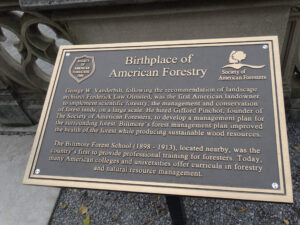
Birthplace of American Forestry
The Legacy
So next time you think of Biltmore as only an enormous mansion built on a huge estate by an ultra-wealthy man, think again. Remember, it’s also the birthplace of American Forestry, thanks to the vision and knowledge of three remarkable men—Frederick Olmsted, Gifford Pinchot, and Dr. Carl Schenck.
Did You Know…
…Frederick Olmsted eventually became known as the “Father of American Landscape Architecture?”
…Gifford Pinchot founded the Society of American Foresters and served as the first chief of the U.S. Forest Service?
…Between 1898-1912, more than 300 of the nation’s first professionally-trained foresters graduated from Dr. Schenck’s Biltmore Forest School? Many of these men held important forestry-related positions, both in the U.S. and around the world.
